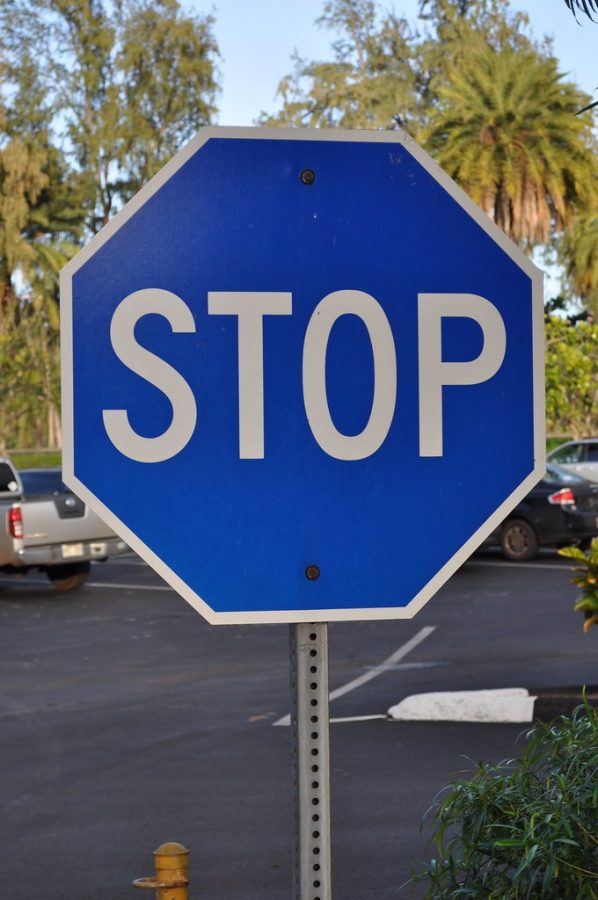Why Aren’t Stop Signs Blue?
Inside color psychology and its uses.
A viral picture of a blue stop sign reached 32,000 upvotes.
November 12, 2021
A picture of a blue stop sign in Oahu, Hawaii recently went viral on Reddit with over 32,000 upvotes. Over the course of this stop sign’s rise to fame, many have commented on how much more aesthetically pleasing this alternative is — so why is the classic stop sign a bright red color instead of a pretty blue like this one?
The answer lies in color psychology. Though it remains controversial, many scientists speculate that the color of a brand, object, or logo can highly affect how people perceive it.
Red, for example, stimulates excitement, and can raise blood pressure. It catches attention and evokes urgency: the perfect color for a sign that can mean life or death for a pedestrian.
On the other hand, blue is known to cause a mental response rather than a physical response. It brings a sense of peace and productivity, and can be calming or tranquil.
However, color psychology goes for more than just these two colors.
Yellow causes joy and excitement, while green creates thoughtfulness and relaxation. Even an obscure color like amethyst can be shown to make someone feel sensual or mysterious.
So how do scientists know that these colors promote such feelings? Extensive research proves their hypotheses.
In 1982, a study at Mexico State University asked children between fourth and sixth grade what emotions colors made them think of. The results showed that 16.4% of the children pointed to red as a strong emotional color, followed closely by 15.1% with black and 14.4% with blue.
Additionally, a study published in the Journal of Experimental Psychology showed that when red, green, or black number cards were given to a set of participants, those with red performed 20% worse on a test than their peers.
In another study on fifty middle school students, those who were given a glucose solution that was dyed red stated that it tasted sweeter than an identically flavored clear liquid.
Color psychology can even affect sports.
In the 2004 Olympics, athletes competing in four different sports (Greco-Roman wrestling, freestyle wrestling, boxing, and taekwondo) were given either red or blue uniforms. Those with red uniforms won 65% of the contests, while blue-clad athletes won 35%.
So while a beautiful blue stop sign like this one in Hawaii seems cool, color psychology proves that it may not be nearly as effective. Blue may be a pretty and serene color, but it’s no match for the passionate alteredness that comes with a red stop sign.




Amy cusack • May 20, 2022 at 11:48 pm
This is an insightful article. Well done.